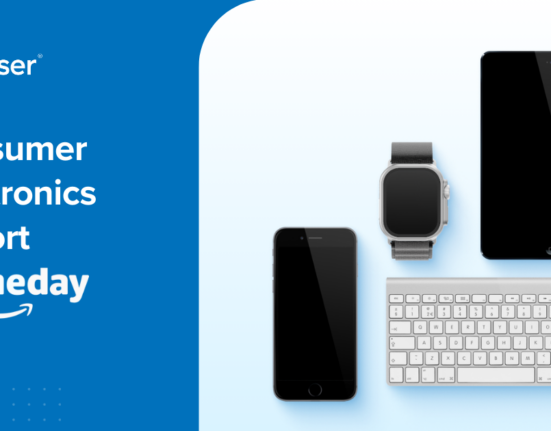Everyone loves free samples. Everyone loves the feeling of discovering something new and exciting. Everyone loves to speak their minds about the things they use every day.
This is what makes field marketing such a powerful piece of the marketing puzzle for B2C manufacturers and retailers. It lets you get up close and personal with customers in a way that is fun and memorable for them and drives key business results for you.
In this article, we’ll look at what field marketing is, why it’s important to different types of retailers, and how you can incorporate field marketing into your overall strategy.
What is Field Marketing?
Field marketing is the practice of putting specialized marketers “in the field” to perform product demonstrations, promote products, provide samples, gather intel on how products are displayed, make sales and collect feedback directly from consumers. The “field” is a catch-all for going to where customers or potential customers are. It can be anything from retail locations and pop-up shops to public spaces.
If advertising, social media, and content marketing are about telling consumers about your products, field marketing is all about showing. It’s meant to be conversational, interactive, and a means of getting direct feedback about your products.
Field marketing is often a function that falls under experiential marketing or event marketing, but it doesn’t always have to be. You don’t need to have an official field marketing manager or team within your marketing department to get your sales and marketing people directly in front of customers to reap the benefits that come with face-to-face exposure to them.
Field marketing is the practice of putting specialized marketers “in the field” to perform marketing tasks and collect feedback directly from consumers.
Benefits of Field Marketing
Before we talk about the “why” behind field marketing, it’s worth understanding which types of retailers and manufacturers benefit from it.
So what are the benefits of actually getting out in the field? Let’s look at a few retail verticals where field marketing can drive sales and greater consumer insights:
- Food and beverage
- Home goods
- Electronics and appliances
- Beauty products
- Apparel, footwear, and accessories
- Mobile phones
- Consumer packaged goods
You don’t have to look very hard to see why these verticals really benefit from having direct interactions with customers. All of them sell physical products, and that means there is something that gets lost when the value of those products is conveyed only through advertising, regardless of how well done it is.
How specifically does meeting consumers in the field help?
Increase Brand Awareness
Even in the smallest of retail locations, the fight for consumer attention is fierce. With so many competitive products, it can be hard for manufacturers to get their products to stand out. This is where a team of field marketers can break through the noise. And that’s at the point of purchase. It’s even harder to stand out with advertising when consumers are barraged with marketing messages for most of their waking hours.
Field marketing is important because it disrupts the routine and gets them to pay attention to you. A live demonstration, a chance to try a product, an opportunity to give feedback—all of these grab consumer attention and help people associate faces and experiences with your brand.
Bolster Brand Perception
“The best … ”
“The fastest … ”
“The most … ”
It’s not hard to understand why some consumers tend to be cynical about advertising when they pay attention to it. In a crowded field, marketing messages tend to blur for people and lose their impact. This is especially true for shoppers who have not yet tried your products.
Field marketing is a way to counteract that by giving manufacturers a way to back up their product claims. Telling consumers how effective your product is can help, but letting them see it for themselves can be the difference between passive acknowledgment and active interest in what you offer.
Improve Sales
Field marketing at the point of purchase can be a great way to go straight from awareness and interest right to a paying customer. If you’re launching a product or trying to get an existing product to catch on with a segment you haven’t yet targeted, field marketing done right can be enough of a “wow” moment to get people to make a purchase on the spot. This is especially true if you do your testing in a retail location. Anyone there is already in a buying mindset, so they are primed to make a purchase if they like what they try.
Test New Concepts
When you launch a new product, you don’t have the benefit of real-life testing in your target markets. Field marketing is a powerful way to test concepts with real customers in a buying setting. The feedback you get, whether it’s through surveys, discussions with field marketers, or seeing how many items you sold, is invaluable when deciding whether or not to push forward with a new concept.
Gain Consumer Insights
Even if you aren’t testing a brand new concept, hearing directly from customers gives you the feedback loop you need to refine your messaging, iterate on your product, change your price point, and anything else you need to better understand your customers.

How to Create a Field Marketing Strategy
Understand How Field Marketing Fits Into Your Overall Marketing Strategy
The field marketing function rarely exists in a vacuum. When you’re building a field marketing strategy, consider how it fits into other campaigns your team is running. For example, if you are investing in TV, radio, and digital ads in a particular geographic area, how can you use field marketing to capitalize on the attention your other channels are getting you? Use field marketing to build on the awareness and interest you’ve created and find ways to move buyers closer to a decision in your favor.
Know Your Audience
What market segment are you trying to reach? What would they respond to in the field? Where can you most likely reach them? This fits into understanding your wider marketing strategy. If you don’t know who you’re speaking to and what stands the best chance of capturing attention and interest, you will be hard-pressed to do impactful field marketing.
Set Well-Defined KPIs
What do you want your field marketing to achieve? Is it direct sales in the field? Growing an email list? Fixing a retail display in a store to see how it impacts sales? What you measure depends on what you want to get out of your field marketing. Be sure to communicate these KPIs to your field marketers and give them a way to track their work.
Get Creative
Field marketing and “guerilla marketing” can often go hand-in-hand. Guerilla marketing refers to creative field marketing campaigns that target customers in unexpected and memorable ways. These campaigns are not necessarily high-budget, but bring tons of energy and excitement in delivering an unforgettable experience.
Here’s one great example: Domino’s Pizza’s “Paving for Pizza” campaign, where the pizza chain filled in potholes in roads around the United States. They gave cities a grant to fix the potholes and gave them stencils, stickers, and signs that drew attention to the project. The campaign went viral on social media and brought a lot of goodwill to Domino’s.
You don’t have to do something on this grand of a scale to bring a memorable experience to your customers. Think of ways to insert what your products and brand are about into the daily lives of your customers in ways that bring delight to them, and you have the makings of a guerilla field campaign that drives results.
Field marketing is a vital part of any B2C marketing team. It can be a standalone function within your marketing organization, or it can be something that supports experiential and event marketing. Either way, direct contact with your target audience is useful in so many ways, so don’t hesitate to get started on creating your own field marketing strategy.














